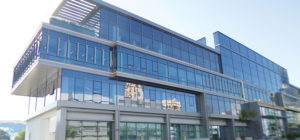In a conversation with Window & Façade Magazine, Richard Lee Managing Director at Brital Limited, UAE talked about Brital's journey and its plans and also about the aluminium façade industry and its impact in the region. Here are the exceprts... Please brief us about Brital’s journey. Since being founded in the mid-1990s to serve the Gulf region markets, Brital systems have evolved to meet the regional market requirements and customer expectations, which has resulted in one of the most comprehensive ranges of façade systems available today. Tell us about Brital’s product offerings? What benefits do they offer? [caption id="attachment_39606" align="alignright" width="500"] Huawei Offices, Tecom, Dubai[/caption] Brital systems are unique in that they have been specifically designed to suit the climatic and performance requirements of the Middle East region, they are not adapted systems originally designed for other markets. Having highly qualified and experienced design staff at our disposal enables us...
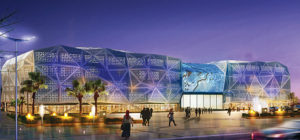
Glass – A High Performance Functional Material
Please brief on types of Architectural Glasses used on Modern Facades and Fenestration? The architectural glass comes in different categories. Few that are majorly used are laminated, insulating, coated, tinted, wire, smart glazing and many more categories. Please brief on the Functional, Structural and Energetic aspects of Glass Facades and Fenestration? Everywhere you look today you’ll see some sort of structural glass facade. Major improvements have been made in the facade engineering to make glass one of the primary means of construction for new buildings. Not only does glass have a great visual appeal, but it now serves more functional purposes. Functional Aspects: Allowing sunlight to enter into a building can save electricity as you can use natural light instead of artificial lighting. Contrary to what may be the public perception, technological advances in glass has helped it regulate heating and cooling in buildings. With the strict energy requirements placed...
Posted on: 30 Apr 2020
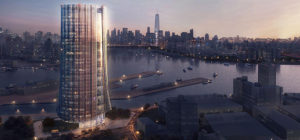
Circadian Curtain Wall Geometry Inspired by Nature
HOK’s Circadian Curtain Wall concept draws on biophilic design to offer building occupants abundant natural light while minimising solar heat gain. How can façade systems play a more important role in improving employee health and well-being? That was the challenge in a recent competition, and it got me thinking about an idea. For the past two years, me and my colleagues in HOK had been working on a concept for a load-bearing façade for high-rise buildings. [caption id="attachment_37550" align="alignleft" width="500"] Inspired by the 24-hour circadian clock, the façade’s design maximises building occupant’s exposure to daylight and the daily rhythms that influence human health[/caption] That design of structural exterior enclosure, replaced much of the aluminium found in modern curtain walls with steel, giving the façade additional strength to serve as part of the building’s overall framing and, because steel requires one-third the amount of carbon to produce as aluminium, reducing its...
Posted on: 01 Apr 2020
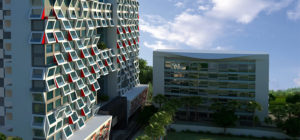
Negotiating Boundaries
The building façades are not just the skins of the structures that give its face value externally. They cannot be purely a result of aesthetic dimensions (decorative) nor only for controlling internal climate, a safeguard from the fluctuation of the weather outside. They are operated from both internal and external flows and constrains. Conrad Waddington, a developmental biologist’s “epigenetic landscape” explains this operative nature of the façade intensively. Waddington’s model consists of an undulating sheet of the suspended surface with underside ‘tied down with a complicated network of guy ropes which are attached to the pegs’. Waddington's (1957) depiction of his 'epigenetic landscape' These are representations of genes and their interactions - internal constraints of the system. As the diagram indicates, the course of the slope of any valley is a resultant of the tension that execrates by these ropes. Above the surface, the rolling marble represents the cell’s future...
Posted on: 26 Feb 2020
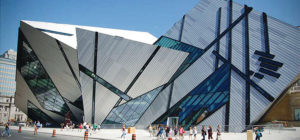
Defining Future Façades and Fenestration
"Let's face it, sometimes you do judge a book by its cover, and a building by its façade..."Pondering back at architectural history, we observe that concerns related to façade treatment have gathered a multitude of consciousness to create a much pleasant visual impact to the public. But in today's scenario, what goes beyond the frontier, is a building that stands the test of times, the one which is more than just a static vertical design constituent. The question that immediately strikes our mind is what if a façade is more than this conventional perception of its character; merely being a building envelope. What if it is a living façade that changes with time its shape and size. What if it responds well to the climatic conditions, sunlight, wind and even day to day technology. There can be nothing better than a façade that adapts itself to the surrounding environment following...
Posted on: 25 Feb 2020

Mabel Aguerre & Mercedes Gargallo
Mabel Aguerre is an architect with experience in the architectural design of medium and large-scale projects, from the concept to the construction phases. She worked for many architectural practices in Europe, collaborated and managed the façade and architectural design of numerous LEED 2009 and LEED v.4 certified projects. Aguerre is currently managing the façade design and construction systems development and leading the UN SDGs within the façades London team. Mercedes Gargallo is an architect and holds a master’s degree in façade engineering. She has fifteen years of work experience including thirteen years in the façade industry as a cladding contractor and a consultant. She has extensive expertise in the design and analysis of curtain walling, double-skin façades and rainscreen systems using a wide range of materials such as glass, aluminium, steel, timber, copper, etc.
Posted on: 19 Feb 2020
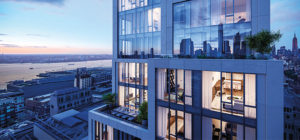
Energy Harvesting Façades
Construction industry is a huge contributor to environmental degradation worldwide. According to the International Energy Agency, the buildings and buildings construction sectors in 2019 combined are responsible for 36 per cent of global final energy consumption. There are many ways for a building project to become more environmentally sensitive. It is important to mention that at the very outset, the simplest way of “harvested energy” through a building is by designing a building that is sensitive to the local climate and thus needs less energy to build and operate. If a building needs less energy for heating, cooling, lighting, ventilation, etc., it will automatically have a much lower energy demand. Similarly, there are many other ways of contributing positively; such as using low embodied energy construction materials, reducing water usage, addressing construction and operational waste, etc. This article however focuses on current technological achievements and possibilities of energy harvesting through...
Posted on: 14 Feb 2020
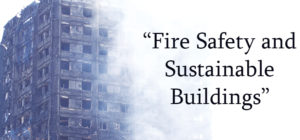
Fire Safety and Sustainable Buildings
On 14 June 2017, the city of London woke up to the tragic news of a devastating fire that ravaged a high rise apartment in North Kensington – the Grenfell Tower tragedy, the deadliest residential fire in the United Kingdom since the Second Worldwar. Since then, it has been the subject of detailed investigations, elaborate media coverage, comprehensive analytical reports as well as numerous conspiracy theories. The 24-storey residential building, originally built in 1974, consisted of 129 flats that provided social housing. In 2016, a refurbishment of the tower was completed during which new exterior cladding was installed and the windows and heating systems were replaced. Though a criminal investigation of the fire is still underway, some reports have isolated the reasons for the rapid and almost undeterred spread of the fire across the façade of the building. Most reports connect the fire with serious lapses in the quality of...
Posted on: 17 Dec 2019
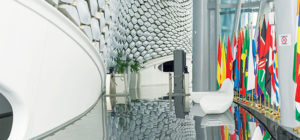
Energy Hall, Kazakhstan
The Energy Hall is placed towards the center of the 25 hectare expo site, just in front of the Kazakhstan pavilion or Science museum. The overall goal of the project was to create a cultural hub connecting the main central pavilion with two commercial buildings and the theater in between, all along the covered street. The venue was aimed to feel and be active regardless of its programming and daily “theatrical” activity. Ideally, the venue would be active any day of the week, any time, and expo or legacy mode. The outer skin of the main hall was designed as an active programmable surface that would allow artists to enrich it with digital art. The potential of being programmable, or ideally also interactive was an important goal. We called this surface “digital active canvas”. The space between this “digital active canvas” and the outer glass layer becomes a very active...
Posted on: 26 Nov 2019
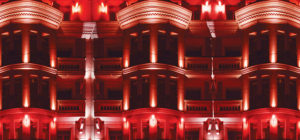
Digital Technology & Media Facades
Façades are the exterior layer of an edifice that creates the first impression and connects its external and internal environment. Therefore, the appropriate lighting of the façade can enhance its beauty and relevance. Façade lighting can strike up an engaging dialogue in the urban world. It lends the building a voice to communicate with its viewers and a personality that creates a visual experience. Some display images, while others highlight architectural accents, and some stand as a landmark with their abstract display in the city’s night skyline. Façade lighting has turned structures into bold personalities that are no longer lost in oblivion after dark. With façade lighting, building owners can choose to highlight entrances, pillars and specific architectural features. The interplay of light and shadow is used intelligently to prevent a monotone appearance of the external surface of a building. Façade Lighting Highlights the Subtle Features of a Building Preserving...
Posted on: 06 Nov 2019
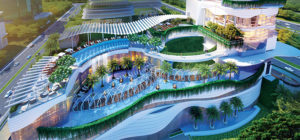
Celebrating Five Decades of Excellence in Design
Please Tell us about Your Firm Rajinder Kumar Associates (RKA)? Our firm was established in the early 1970s by my father Rajinder Kumar, and it is regarded as one of the leading architecture, planning, landscape and interior design firms in India. We have been practicing in India and abroad for nearly five decades. [caption id="attachment_33838" align="alignleft" width="217"] HCL Technology Campus, Noida[/caption] My father had practiced architecture under the able guidance of the team of Le Corbusier and Pierre Jeanerette for many years, designing several important buildings in the capital city of Chandigarh. He worked closely with these stalwarts and had a very close relationship with them. In the late 1960s, Rajinder Kumar forayed into the tourism industry and designed tourist accommodation in the hilly areas of northern India. Five decades later RKA has contributed more to the tourism industry in India than any other architect, by designing the largest number...
Posted on: 24 Oct 2019
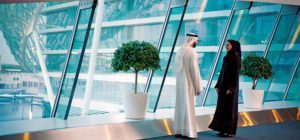
“Cladding Materials Should Have Resistance to Environmental Influence”
What are Your Views on the Growing Demand of Glass in Building Envelope? [caption id="attachment_33439" align="alignright" width="362"] DAMAC Towers by Paramount Hotels & Resorts Dubai is clad by a Variety of Guardian Glass Coated Solutions, Helping Achieve Complex Aesthetic and Performance Requirements[/caption] We are seeing more buildings with bigger windows, larger window to wall ratios and generally bigger window panels. This is because architects realise the benefit of placing importance on the wellness of the inhabitants, and how wellness is achieved by having a building with more outside vision than a building with closed box walls. With the continuous development of new glass products and innovations in glass, we are able to create a lot more options for architects to realise their vision with glass and make bolder statements in their designs, all the while meeting increasingly more stringent building codes. What Should be the Choice of Glass for Windows...
Posted on: 30 Sep 2019
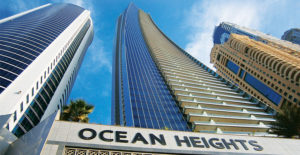
Practical Approach for Complex Geometry Facades
Due to the progression of computer aided design and development of 3D softwares, it is now relatively easy for designers to develop fluid shapes and surfaces. These can be applied to developments in the design of the external facades surface. In general principals a surface that does not follow any sequence is considered as a complex geometry. In the past, complex geometries were not very commonly used, in fact, they were generally avoided due to the difficulty in the design and detailing as there was no direct mathematical solution to derive these geometries. Park Towers, Dubai, UAE - Unitised Curtain Wall System Using Triangular Panels Nowadays, complex geometries are very common in architectural design and their digital creation is well supported by a wide range of computer software’s. However, fabrication and execution of facades with complex geometries is still a very specialized task. For this reason, architectural designs incorporating complex...
Posted on: 29 Aug 2019
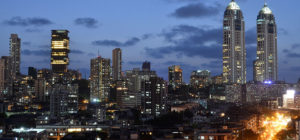
In Conversation With The Visionary Of Architecture
WFM: How have you been ideating and practising sustainable architecture? Do you think that the present ratings for sustainable buildings are important? [caption id="attachment_32675" align="alignleft" width="300"] Infosys Progeon, Bengaluru[/caption] Hafeez Contractor (HC): Yes, I feel that the green building ratings are important. In India, sustainability of the building could be evaluated by its LEED or GRIHA rating. Such ratings assess the environmental performance of a building holistically, and provides a definitive standard score. The tools adopted by them, by its qualitative and quantitative assessment criteria, is able to ‘rate’ a building on the degree of its 'greenness’. According to the points achieved, buildings are given LEED Platinum, Gold and Silver ratings, or GRIHA 1 to 5 star rating. [caption id="attachment_32677" align="alignright" width="300"] Infosys, Mysore[/caption] According to me, we have to take the standards assigned to the green building ratings to a much higher level in future. For our country, the...
Posted on: 01 Jul 2019
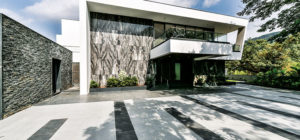
Effective – Exterior Wall Cladding
Cladding is an exterior finishing system a skin to a skin or an additional non-load-bearing layer that serves a dual purpose. It not only helps protect the interiors of the building from harsh weather elements but also makes the outside decorative and attractive. The right cladding helps to maintain the buildings weather-tight and cost-effective, at the same time providing thermal insulation, reducing the temperature variation inside the building. It also helps to improve interior acoustics and daylighting. The cladding can influence the value, sale-ability and safety of the building. So cladding your property effectively is a wise investment that pays both short and longer-term dividends. There are now more cladding systems in the market than ever before. Finding the most appropriate choice may take a little time, but cladding – used creatively and intelligently – is a great way to stamp your own personal style on a property. Ready to...
Posted on: 05 Jun 2019
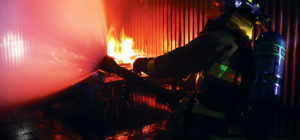
Fire Safety & External Wall Cladding
Most modern high rise buildings we see coming up all around us today have façades and cladding covering almost 60- 100 per cent of their elevations. Architects and designers are in search of the iconic building and are constantly experimenting with different materials to clad their projects. Traditionally, natural stone was the most preferred material used in addition to painted masonry walls. However, in the last two decades, a variety of innovative cladding materials have been introduced by manufacturers to clad buildings which are stronger, lighter and more durable as compared to natural stone. The choices of materials used for cladding high rise building are normally selected on the basis of its appearance, durability, and availability of colors. However, now with the pressure on land availability in urban zones, the need for building taller structures has become the norm. While designing such high rise structures, the designers need to focus...
Posted on: 04 Jun 2019
